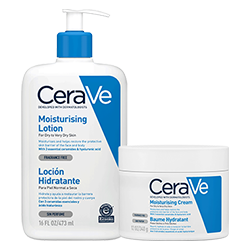 Blog
Blog

Why is My Skin Looks so Oily?Understanding Your Skin
Oily skin can be caused by various factors, such as genetics, weather, stress, hormones and washing too often or washing with a harsh cleanser that strips the skin of oils—causing the sebaceous glands to increase oil production. In a particular case, dehydrated skin could also cause increased in production in sebum, choosing a suitable skincare routine will help guide you to achieve fresh, healthy-looking, skin.

WHAT YOU NEED TO KNOW
Oily looking skin could suffer from shine, enlarged pores and blackheads, and it may feel slick even after cleansing. It is also often prone to breakouts. If you're not sure if you have oily skin, you can use blotting sheets to test it. To do so, dab one blotting sheet on your cheeks, another on your forehead and another on your nose, then hold them up to the light. If all three of the sheets are saturated in oil, it's reasonable to believe that you have oily skin. (Note: Normal skin will show only light oil stains from all areas of the face, while oily skin will show an abundance of oil from all areas.)
TIPS FOR SKINCARE ROUTINE OF OILY LOOKING SKIN CAUSED BY DRYNESS
- Look for a gentle, non-comedogenic face wash
- Choose non-comedogenic moisturizers, including a daytime formula with SPF and a lightweight nighttime formula
- Dehydrated skin with compromised skin barrier sometimes can trigger an increase in sebum production, causing oily looking skin. In this case, skincare products formulated with ceramides can help restore the skin's barrier.
Why is My Skin Looking Oily?
There are multiple possible causes to make your skin looks oily. Genetics 1 can cause your sebaceous glands to produce an excess of sebum, which causes oily skin. But that's just one possible reason for why you may have oily skin. Others may include the weather, hormones and stress2 ,causing your skin to produce more oil than usual.
In some case, washing too often or with the wrong cleanser can strip the skin of its natural oils and damage the skin's barrier, which can trigger an increase in oil production. Likewise, when the skin (stratum Corneum) isn't properly hydrated, it will work to retain its own moisture by producing more sebum. In this case, washing with a cleanser and using a moisturizer choosing products containing ceramides to help restore the skin's barrier.
TIPS FOR SKINCARE ROUTINE OF OILY LOOKING SKIN CAUSED BY DRYNESS
It should begin with a gentle, non-comedogenic face wash that won't strip the skin of its natural oils and won't clog pores. To help maintain your skin’s moisture, we recommend choosing a cleanser formulated with ceramides to help restore the skin's barrier.
To keep skin hydrated, it should also include a daytime moisturizer with sunscreen to help protect your skin from the sun's damaging rays, as well as a lightweight evening moisturizer that can help keep your skin hydrated while you sleep. Moisturizers like CeraVe Facial Moisturizing Lotion SPF25 and CeraVe Facial Moisturizing Lotion are non-comedogenic and include hyaluronic acid, ceramides and niacinamide. In addition, they are formulated with MVE Technology—a delivery system that continually releases moisturizing ingredients.

